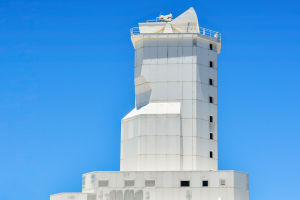Jupiter, the largest and heaviest planet in the solar system, occupies the fifth orbit from the Sun.
As a gas giant, Jupiter captivates not only with its striking appearance and immense size but also with its intricate internal structure and dynamic atmospheric system.
With a diameter of approximately 142,984 kilometers, Jupiter is about 11 times the diameter of Earth. Its mass is roughly 318 times that of Earth, representing more than 70% of the total planetary mass in the solar system.
This colossal mass and volume make Jupiter a dominant force in the solar system. It influences the orbits and characteristics of nearby planets and celestial bodies and has played a crucial role in the formation of the early solar system.
Jupiter's average distance from the Sun is about 778 million kilometers, which is roughly 5.2 astronomical units. As a gas giant, Jupiter is primarily composed of hydrogen and helium, with trace amounts of methane, ammonia, hydrogen sulfide, and other gases.
The planet’s atmosphere features a complex cloud structure, with the most notable feature being the "Great Red Spot." This massive cyclone has been raging for centuries and is about twice the diameter of Earth. The existence of this enormous storm system highlights the highly dynamic and complex nature of Jupiter's atmospheric processes.
The climate system of Jupiter is extraordinarily intricate, characterized by high-speed and volatile atmospheric movements. The distribution of its surface clouds exhibits a distinctive striped pattern, consisting of "belts" and "zones." These features are a result of the planet’s rapid rotation, which drives atmospheric circulation.
The belts are cyclonic, while the zones between them are anticyclonic. Additionally, Jupiter’s auroras are particularly spectacular. Due to the interaction between its strong magnetic field and the solar wind, Jupiter's auroras are not only brighter but also more frequent than those observed on Earth.
Beneath its atmosphere, Jupiter’s internal structure is relatively complex. There exists a layer of liquid hydrogen and helium below the gaseous outer layers. In this high-pressure environment, hydrogen assumes the properties of metallic hydrogen, which is electrically conductive.
Jupiter’s core is hypothesized to be a solid mass composed of rock and metal, although its precise composition and structure remain subjects of ongoing scientific investigation.
Jupiter is also home to a vast satellite system, currently known to include 95 moons. The four most famous of these are the Galilean moons: Io, Europa, Ganymede, and Callisto. Io is the most volcanically active body in the solar system, with its surface marked by numerous volcanic eruptions and sulfur deposits.
Europa is believed to harbor a subsurface ocean, making it a prime candidate in the search for extraterrestrial life. Ganymede, the largest moon in the solar system, features a surface covered with numerous impact craters and fractures, including one of the largest impact craters known. Callisto, covered by ice, may also contain a subsurface ocean of liquid water.
Jupiter has been pivotal in shaping the solar system's formation and evolution. Its immense mass and gravitational influence likely played a significant role in the development and orbital dynamics of other early solar system planets.
Furthermore, Jupiter’s magnetic field and the complex phenomena within its atmosphere offer valuable insights into planetary science and climate dynamics.
As future exploration missions delve deeper into Jupiter’s mysteries, our understanding of this giant planet will become more comprehensive, potentially uncovering even more remarkable secrets.
As the fifth planet from the Sun, Jupiter’s unique characteristics and intricate systems underscore its importance as a subject of research in astronomy and planetary science.


